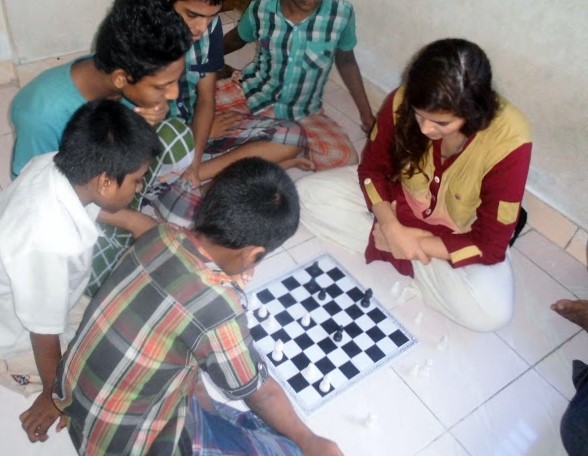
by Saeeda Zaman
Read the prequel: ‘How to Become a 9 Year Old Drug Dealer‘ here.
When it seems as though these children have nowhere to turn, Arif Arian enters the scene with his new shelter home to rehabilitate the kids.
Sure, it sounds like a heart-warming happy ending for everyone. But, these children have never had someone telling them to brush their teeth, and their next meal used to be determined by how much they sold that day. They would wander about freely, whimsically deciding when and where they want to sleep – and always under the open sky, of course. Let’s be real, drugs are meant to feel good. Without a proper justification against it, the children have no reason to give up the drugs.
When you take someone who has been raised with so much “liberty” and try to place them indoors under some guidelines, they will not want to stay. The difficulty behind attempting to convince someone that it is in their best interest to remain at the shelter is augmented by the children’s inability to trust. In the exploitative world where they have been raised, why would anyone go out of their way to help someone they don’t even know? It just seems foolish.
Upon entering the shelter, hostility exudes from each child as they meet similar kids. Coming from the aggressive streets, their pugnacious nature launches them into instant fights with one another. The vulgar language emitted from their tongues would cause even the worst potty-mouth to purchase earplugs. On one occasion, the children began to jump on a faucet until it burst. With their traumatic experiences fueling their activities, the children had no respect for one another nor their new shelter home.
Yet, when I visited the shelter, the group of boys were the best-behaved kids ever. We sat together in an open circle where they shared poems they knew, prayers they had learned, games they liked to play, what they watched on TV, etc. One of them even beat me (read: demolished me) in chess.
It was as if I was looking at a family; 10 boys who do everything together. Were these really the same kids I just described earlier?
This miraculous transformation prompts the question, “Can you change the way someone thinks?“ Costly rehabilitation centers have proven to be effective with the help of hours of counseling, classes, medical professionals, therapy groups, and a variety of other amenities. Here, we have volunteers. People like you.
Now imagine trying to change someone’s mental process on an individual level without any resources and a recalcitrant patient who also happens to be a child. Not so easy.
It starts with little things. The fact that they all came from different places which they considered to be superior to those of the other kids was one of the reasons for the growing animosity among the children.
“You’re nothing, you’re from Shahbagh.”
The first step was to tell them that from now on, they are from here, where the shelter is. By giving the boys the same home, Mr. Arian created equality.
The concept of equality is perhaps the strongest asset of this shelter. The shelter has been offered beds many times but chooses not to take them. Instead, the boys all lay a thin mattress and some bed sheets on the ground every night. Why? A bed becomes a personal domain. Someone’s can be better, someone’s can be worse. You are allowed to kick someone off your bed under the claim that it belongs to you. They have to learn how to be a family, a part of a group, not individual rivals as they have learn to live their whole lives.
The thin mattresses may not be as comfortable as a bed, but everyone lie side by side. Everyone eats the same food, learns the same stuff, and no one has control over the TV remote. They have grown up fighting; it is time for peace, and the only way to do that is to eradicate any source of hostility.
The children are required to live in the shelter for three years. During this time, they are educated on some trade skills, such as using a computer, and also about the health damages caused by drugs. Now, the shelter has three computers, a TV, a caretaker for the boys, and a cook. It is run entirely on the personal income contributions of the volunteers and sponsors.
Based on what I have seen, I believe that once these boys leave the shelter, they will return to help someone else just like them. It’s a small solution to a societal issue. It may not be 100 kids, but even changing one child’s life makes them a positive contributing member of society. Another child saved, another step closer.
 Saeeda Zaman is from Chicago, Illinois. She is attending Purdue University and is a globetrotter. She recently went to Bangladesh last summer for an internship, to explore her roots and understand how people actually live.
Saeeda Zaman is from Chicago, Illinois. She is attending Purdue University and is a globetrotter. She recently went to Bangladesh last summer for an internship, to explore her roots and understand how people actually live.




